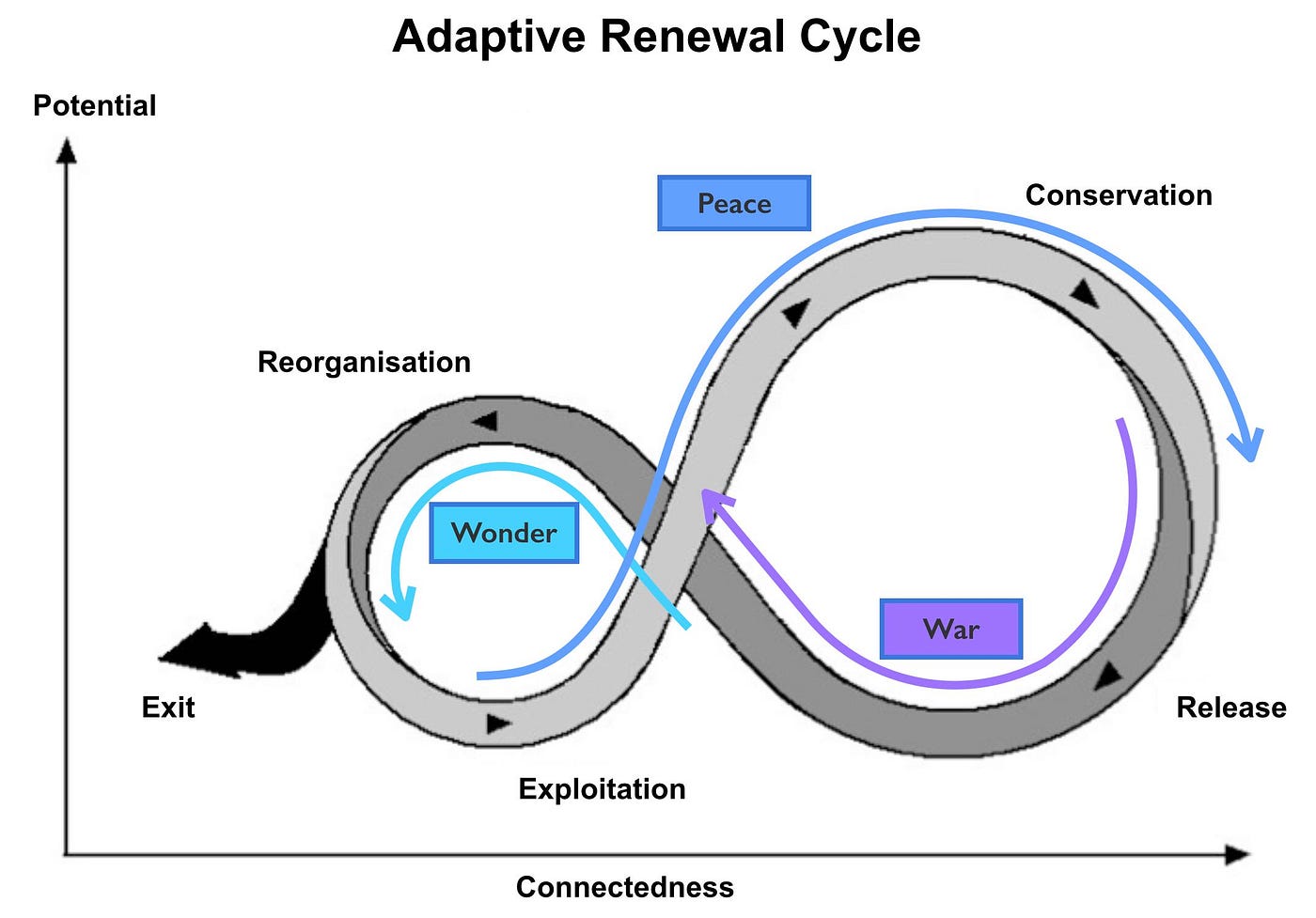The adaptive cycle describes the dynamics of a complex ecosystems in response to change. We start with the creation of some form of disturbance — the genesis of a new act, some form of wonder. This is followed by a rapid stage of exploitation and accumulation in a stage of conservation where the change has become more stabilised in the ecosystem — the equivalent to a time of products, a peaceful state of competition. Eventually, the change has been normalised which releases energy enabling re-organisation and the genesis of new acts and new disruptions — the time of war. The Holling’s cycle is measured over the potential of the system for change and the connectedness of the system. Whilst not an exact corollary, I’ve overlaid an approximation of the peace, war and wonder cycle onto the Holling’s cycle in figure 112.

The importance for Simon of this was it gave rise to a number of concepts. First, when considering economic systems we would have to look at them as we do with biological systems and consider how an ecosystem reacts to a change and how competition will drive that change throughout the system. Secondly, the size of the ecosystem impacted should reflect the connectedness of the system that is changing i.e. industrialisation of legal will writing would only impact the legal industry whereas industrialisation of computing should have a much broader macro-economic effect. Lastly, there may well be an element of re-organisation involved.
> I was already aware of co-evolution but maybe this enabled broader organisational change?